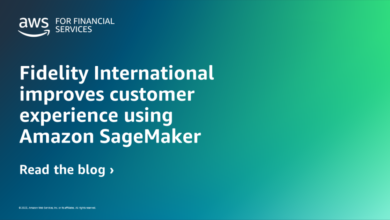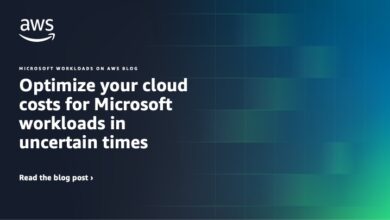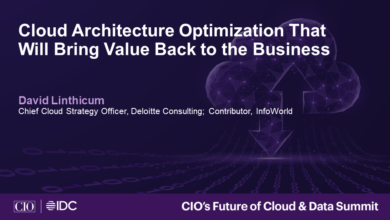An Exploration of the Layers of Cloud Computing

Cloud computing has transformed how businesses and individuals store, access, and handle data, bringing about a significant revolution in the digital landscape. To truly grasp the concept, it is essential to explore the layers that constitute cloud computing. This article takes you on a comprehensive journey through the layers of cloud computing, platform, and software layers, shedding light on their functionalities, benefits, and potential considerations. Get ready to unravel the layered architecture of cloud computing and unlock its full potential.
Layers of Cloud Computing
In the vast realm of cloud computing, understanding the different layers is essential for businesses and individuals seeking to leverage its benefits. Cloud computing operates on a layered architecture that encompasses Infrastructure as a Service (IaaS), Platform as a Service (PaaS), and Software as a Service (SaaS). Let us know them in detail.
Infrastructure as a Service (IaaS): Building Blocks of the Cloud
At the foundation of cloud computing lies Infrastructure as a Service (IaaS). Infrastructure as a Service (IaaS) is a fundamental layer of cloud computing, providing the building blocks for scalable and flexible IT infrastructure. With IaaS, businesses can leverage virtualized computing resources, including servers, storage, and networking, eliminating the need for physical infrastructure maintenance. This cloud model offers numerous advantages, such as cost savings, on-demand scalability, and increased efficiency. By outsourcing infrastructure management to trusted providers, organizations can focus on their core operations and rapidly adapt to changing business needs. Embracing IaaS empowers businesses to harness the full potential of the cloud and unlock new levels of agility and productivity.
Platform as a Service (PaaS): Empowering Developers
Moving up the layered architecture of cloud computing, we encounter Platform as a Service (PaaS). Platform as a Service (PaaS) has revolutionized the world of cloud computing by empowering developers with powerful tools and resources. This layer of cloud computing provides a ready-made platform, including operating systems, development frameworks, and database management systems, eliminating the need for developers to build and maintain their own infrastructure. PaaS enables faster development cycles, seamless scalability, and collaborative workflows, allowing developers to focus on creating innovative applications rather than worrying about the underlying infrastructure. By leveraging PaaS, developers can unleash their creativity, accelerate time-to-market, and build robust solutions that cater to the ever-evolving demands of the digital landscape.
Software as a Service (SaaS): Ready-to-Use Applications
The top layer of cloud computing is Software as a Service (SaaS). Of the layers of cloud computing, SaaS delivers ready-to-use applications that are accessible over the internet. It offers businesses the convenience of accessing software applications over the Internet, eliminating the need for local installations. With SaaS, users can leverage powerful tools and applications hosted on remote servers, reducing costs and eliminating the burden of software maintenance. From productivity suites to customer relationship management (CRM) systems, SaaS provides scalability, flexibility, and easy accessibility. Embracing SaaS empowers businesses to streamline operations, enhance collaboration, and focus on their core competencies while relying on reliable and secure cloud-based solutions.
Functions and Interactions Between Layers
Understanding the intricacies of cloud computing is vital in today’s digital landscape. The interactions between these layers are crucial for the overall functionality and performance of cloud computing. The various layers of cloud computing, such as infrastructure, platform, and software, work harmoniously to deliver seamless services. Here are some key interactions:
-
Provisioning and Resource Allocation:
The IaaS layered architecture of cloud computing interacts with the PaaS and SaaS layers to allocate resources and provision the necessary infrastructure for application deployment. PaaS relies on IaaS for scalable resources, while SaaS leverages both IaaS and PaaS for infrastructure and platform support.
-
Application Deployment and Management:
PaaS acts as an intermediary layer between IaaS and SaaS, facilitating the deployment and management of applications. It provides developers with the necessary tools, frameworks, and runtime environments to build and run their applications on the underlying infrastructure.
End-users interact directly with the SaaS layer to consume and utilize cloud-based applications. The SaaS layer handles user authentication, data storage, application updates, and other aspects to deliver seamless experiences.
Choose The Right Cloud Computing Program
This table compares various cloud computing programs offered by Simplilearn, based on several key features and details. The table provides an overview of the courses’ duration, skills you will learn, additional benefits, among other important factors, to help you make an informed decision about which course best suits your needs.
Program Name AWS Solutions Architect Cloud Architect Masters Program Post Graduate Program in Cloud Computing Geo All All IN/ROW University Simplilearn Simplilearn Caltech Course Duration Self Paced 11 Months 11 Months Coding Experience Required Basic Knowledge Basic Knowledge Basic Knowledge Skills You Will Learn 10+ Skills Including AWS Solution Planning, AWS Cost Estimation, AWS Data IO, etc. 30+ Skills Including EC2, ECS, Lambda, CloudFormation, ELB, etc. 10+ Skills Including Cloud Provider Selection, Cloud Workloads, Database Management, etc. Additional Benefits 16+ Live Demos of AWS Services
Real-Time Industry Projects
Simulation ExamsMasters Certificate
Capstone Projects
Exam Voucher IncludedCaltech PG Certificate
40+ Hands-on Projects
Masterclasses by Caltech InstructorsCost $ $$ $$$ Explore Program Explore Program Explore Program
Conclusion
Exploration of the layers of cloud computing has shed light on the intricate architecture that powers this transformative technology. From the foundational infrastructure layer to the platform and software layers, each component plays a crucial role in delivering flexible and scalable cloud services. Understanding these layers enables businesses and individuals to make informed decisions when adopting cloud solutions, ensuring they harness the full potential of this technology while addressing security, compliance, and performance considerations. Embracing the layered architecture of cloud computing empowers organizations to optimize operations, enhance agility, and embark on a digital transformation journey that drives innovation and business success in the modern era.
If you are looking to enhance your cloud computing skills further, we would highly recommend you to check Simplilearn’s Professional Certificate Program In Cloud Computing And DevOps. This program can help you hone the right skills and make you job-ready in no time.
If you have any queries or questions, feel free to post them in the comments section below. Our team will get back to you at the earliest.
FAQs
1. What are the potential security threats linked to cloud computing?
Cloud computing presents security risks such as data breaches, unauthorized access, data loss, and service disruptions. Insufficient data protection, insecure APIs, and shared infrastructure vulnerabilities are also concerns. Implementing strong encryption, robust access controls, regular audits, and choosing trusted cloud providers can help mitigate these risks and ensure a secure cloud environment.
2. Which cloud service model is suitable for small businesses?
For small businesses, the most suitable cloud service model is usually the “Software as a Service” (SaaS) model. SaaS offers cost-effective, scalable, and user-friendly solutions without the need for extensive IT resources. It allows small businesses to access and utilize software applications through the cloud, promoting efficiency and growth.
3. Can cloud computing benefit non-technical industries?
Yes, cloud computing can benefit non-technical industries significantly. It offers scalability, cost savings, data security, and enhanced collaboration, enabling businesses in various sectors like healthcare, finance, and retail to streamline operations, improve efficiency, and drive innovation, regardless of their technical expertise.
4. What are the potential drawbacks of using cloud services?
While cloud services offer numerous benefits, potential drawbacks of layered architecture of cloud computing include data security concerns, reliance on internet connectivity, dependency on the service provider’s infrastructure, limited control over data management, and potential downtime or service interruptions. It is crucial to consider these factors and implement appropriate safeguards when utilizing cloud services.



